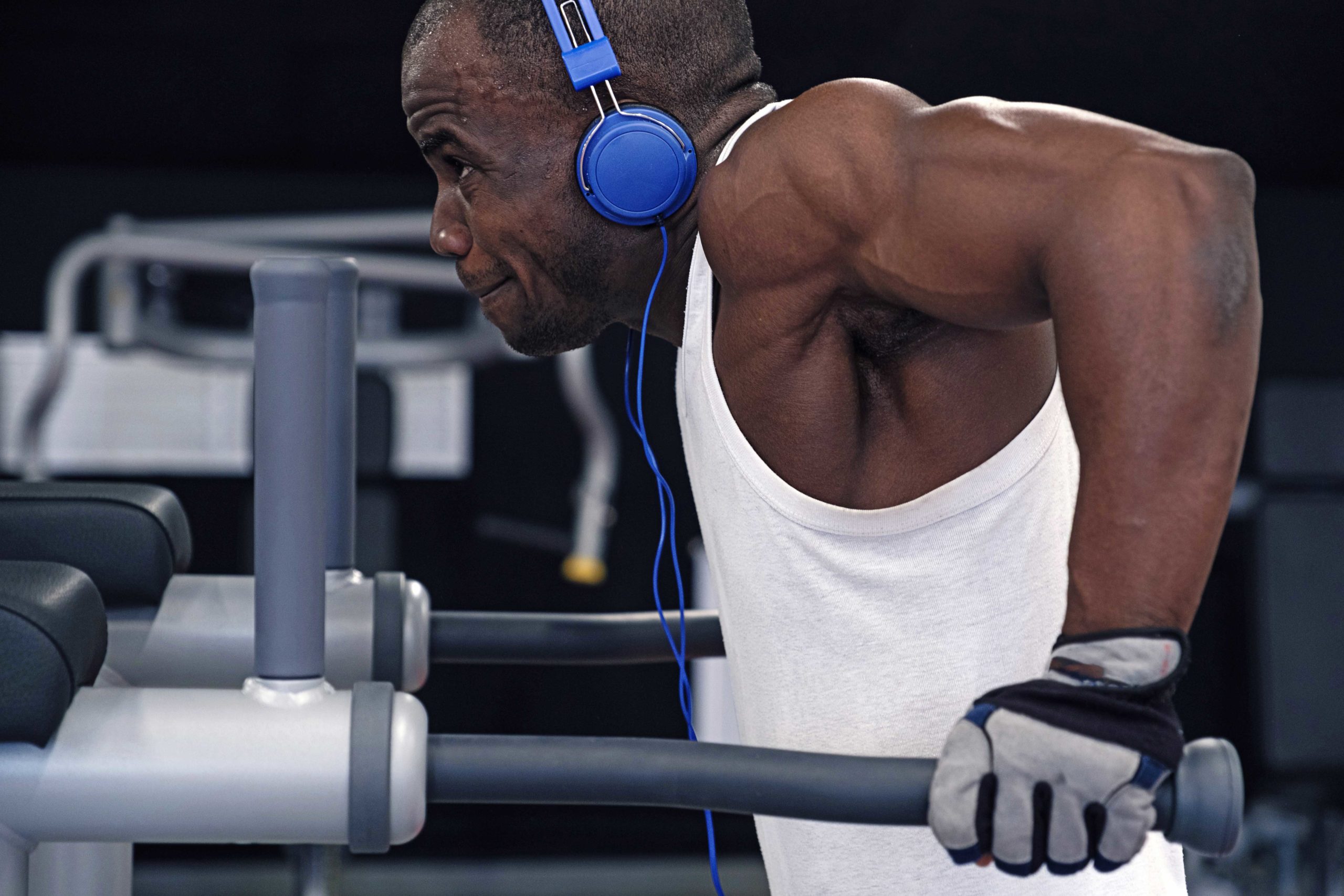DIP Your Way to a Stronger Bench Press

What kind of accessory work do the big dogs use to get massive bench press numbers? Is something missing from your programming that could give you crazy tricep strength to boost your bench?
Joseph Lucero, owner of Harvesting Strength, is a powerlifter and strongman coach with years of practical S&C experience in high school, collegiate, and professional settings. And he knows a thing or two about the competitive bench press. Read his blog to understand why tricep dips could be the missing piece to get your next bench press PR. His progression includes eccentric dips, band-assisted dips, and weighted pause dips. Work dips into your upper body programming today.

Tricep Dips Are Your Missing Piece
Let’s set the scene: imagine a congregation of gentlemen surrounding a bench press to cheer on their fellow iron brother attempting a massive PR. The lifter counts down, back spotter helps with the lift-off and the side spotters are close by, ready to watch this lift unfold. They unrack the bar stacked with slabs of plates.
The bar moves down toward the lifter’s chest and is blasted off his sternum. It starts to ascend slowly, too slowly, and his body shakes before the bar hits a critical moment of mid-air stall. The onlookers watch as the bar starts to reverse and fall back toward his chest. Spotters jump in to help re-rack. He missed it.
Everyone chimes in with words of wisdom and encouragement, but regardless of the feedback… nothing feels worse than failing a massive bench press.
Sure, there are plenty of other things that matter in life—getting your degree, finding the love of your life, the birth of your first child. But if you’re a lifter with a thirst quenched by banging the iron, your bench press really matters.
So how do we lessen the chances of failing our bench? What’s one secret to a consistently massive bench press? Let’s DIP into it.
(We’re talking about the dip exercise.)
Are Dips Safe?
Just like with any movement, the first priority is to promote safe and efficient movement patterns. When you perform the dip exercise, it’s possible to put your shoulder joint in a compromising position if you do them incorrectly.
I wouldn’t prescribe dips to just anyone, but they’re excellent for athletes who have a baseline upper body strength and experience with resistance training. If you have existing rotator cuff injuries or questionable shoulder rotational capacity, proceed with caution and listen to your body.
You Work too Hard to Not See Progress
Find Your Perfect Training Plan
Options for Every Goal
Training plans from real coaches covering any goal, fitness level, and number of sessions per week.
The Best Coaches
Get coached by the best. Olympians, ex-NFL stars, Titan Games Winners, Sport Scientists and more.
Starting at $1/ day
With many options including a free 7 day trial, you can try out programming before you commit.
Dip & Bench Press Anatomy
They’re missing one of the biggest variables for a stronger press: the triceps.
If you want to have a superior press, you need stronger triceps. And you’ll want to practice this tricep strength with a pressing motion, not just through isolated exercises like cable pushdowns or dumbbell kickbacks. Dips are performed with a neutral grip, allowing the athlete to press using more of their tricep muscles.
When you watch some of the bigger names in the bench pressing game, such as Julius Maddox, you might notice he takes a narrower grip and tries to maintain tucked elbows to keep his triceps engaged. For many bench pressers, this technical element can be a major weakness—they can’t keep their elbows tight for a better pressing motion.
Dips basically mimic the bench press in a different plane of motion.
The amount of relative muscle mass you use when you do dips is much more metabolically exhausting than isolation exercises like cable pushdowns or dumbbell kickbacks. The neutral-grip/elbow-dominant position of the dip exercise also engages the lower pectoralis fibers that competitive bench pressers use in the power position.

Level Up Your Training
With TrainHeroic’s immersive training app
TrainHeroic does everything you wish your old gym notebook could do.
Take the guesswork out of training with built-in exercise instruction and basic training programs. Compete against yourself and others. Track your performance and readiness. Smash your goals.

Dip Exercise Progressions
1. Eccentric Dips
This beginner modification focuses on the eccentric (lowering) portion of the dip. Instead of performing the entire movement, start from the top with your arms straight. Use a plyometric box or a stack of plates to jump to the top of the movement, then lower your body down by bending your elbows with massive control and focus. Hit an angle of at least 90 degrees before you stop.
With the eccentric dips, you don’t have to worry about pressing up from the bottom, which tends to be the toughest part. Instead, you get time under tension by lowering slowly through the strongest phase of the movement.
2. Band Assisted Dips
Loop bands help remove some of your body weight from the movement by supporting you on the way up. Fasten a band to the top of the dip station or loop it across the handles. Step your feet or knees into the band so that as you descend during the dip exercise, the band tightens against your body to reduce the load.
So, instead of a 200-pound man doing a 200-pound dip, he’s fighting considerably less resistance during the bottom/pressing portion of the dip.
3. Hard Mode: Weighted Pause Dips
This is the most challenging dip variation and is only recommended to those who have mastered the movements above. Adding weight beyond your own bodyweight (aka being a badass) and pausing at the bottom—the hardest part of the movement—makes dips massively hard.
You don’t have to be a calculus teacher to understand the benefit of being able to perform this exercise. Having an excessive load to perform for paused reps just means you’re placing a stimulus on the body that is beyond your norm (“principle of overload”).
Many of the premier bench pressers do this movement with hundreds of extra poundage.
The volume prescribed for this exercise could range from doing it for a basic 3 sets of 10 reps to an advanced power scheme of 6 sets of 3-4 reps. However you want to begin, understand the dip exercise is going to add so much to your bench pressing game.
So, quit being the pipsqueak that sulks about their lack of gains. DIP into this routine fast to start pressing with tremendous power!
Want Training Tips, Exercise Guides & Knowledge Bombs Sent to Your Inbox?
Sign up for the FitNerd newsletter from TrainHeroic
Related articles
3 Ways to Improve Mobility Without Stretching
Are you still trying the endless foam rolling and stretching exercises to get that deep squat position? We know how important mobility is for great, or even GOOD performance. All professional athletes have some comfortability in end ranges of motion. So, what else do...
The Ultimate Guide to Lunges: Queen of all Glute Exercises
Your glutes are the largest muscle group in your body. They’re responsible for almost everything your legs do—walking, running, jumping, squatting, lunging, and just standing upright. As far as moving through space goes, strong glutes are the bedrock of overall...
A Beginner’s Guide to Steel Mace Training
Author: Jesse Grund
Mace training will make you a better mover without it’s not confining you to a fixed space or predetermined range of motion. Second, it’s an offset load with 80 to 90 percent of the weight in the head. You’re also constantly having to resist rotation, which creates greater core engagement.

Join the community
Sign up for the latest training news and updates from TrainHeroic

About TrainHeroic
Support
Made with love, sweat, protein isolate and hard work in Denver, CO
© 2021 TrainHeroic, Inc. All rights reserved.






